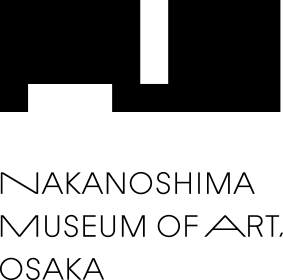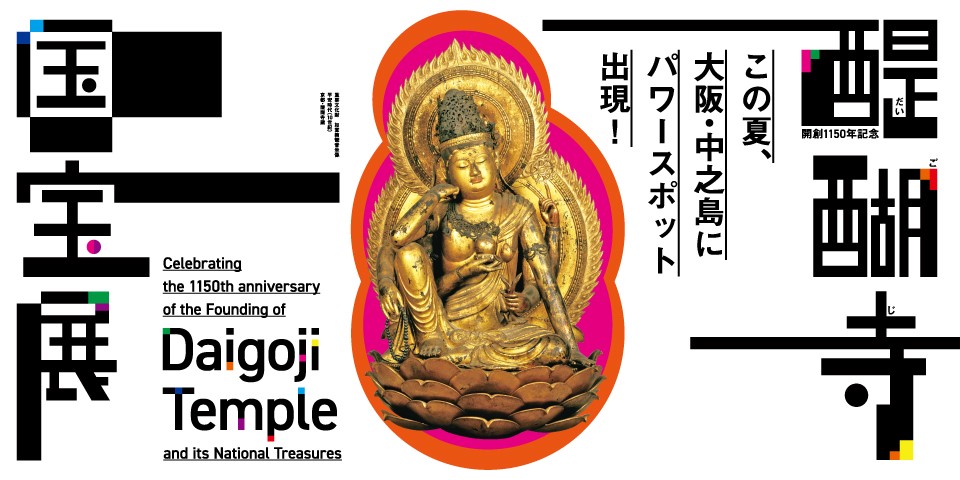
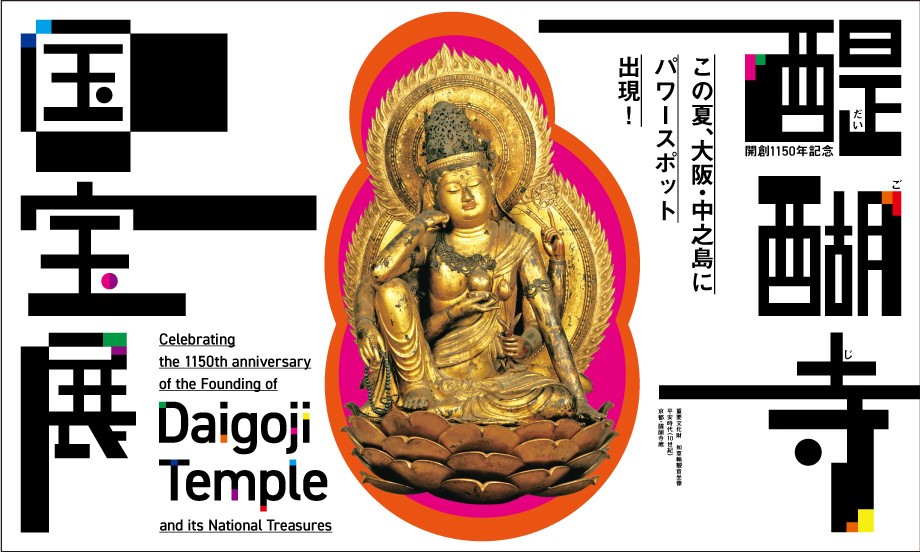
This event has ended.
Celebrating the 1150th anniversary of the Founding of Daigoji Temple and its National Treasures
2024-06-15 – 2024-08-25
Summary
Information about the Exhibition
| Dates | June 15 – August 25, 2024 Closed on Mondays, July 23 *Open on July 15, August 12 |
|---|---|
| Opening hours | 10:00 – 17:00 (last entry 16:30) |
| Venue | Nakanoshima Museum of Art, Osaka 4F Galleries |
| Organizers | Nakanoshima Museum of Art, Osaka, Daigoji Temple, Nikkei Inc., Television Osaka, Inc. |
| Sponsors | ITO EN, LTD., AIR WATER INC., Osaka Shoko Shinkin Bank, Saraya Co., Ltd., Sumitomo Forestry Co., Ltd., DAIKIN INDUSTRIES, LTD., Daiwa Securities Group |
| Cooperation | Nara National Museum |
| Supervisor | NAITO sakae (Director, Osaka City Museum of Fine Arts) |
| Admission fee | Adults 1800 yen (advance sales/groups 1600 yen) University / High school students 1100 yen (advance sales/groups 900 yen) Junior high school/Elementary students 500 yen (advance sales/groups 300 yen) Member privileges (free admission, discounts) are available for this exhibition * Advance ticket sales: April 15 – June 14 (23:59) *A set of two adult tickets 3000 yen (Only available during April 15 – May 31 (23:59)) * The museum may close without notice in the event of disasters or other circumstances beyond our control. * Prices include tax. Group prices are for groups of at least 20 visitors. * Persons holding an official Disability Certificate are admitted for half the price of a same-day ticket (including one attendant). Apply at the ticket counter (2F) on the day. (No advance reservation required.) * Certification of eligibility for special rates must be presented before admission for all except regular adult rates. * For this exhibition, regular adult rates apply to Osaka residents aged 65 or older. Ticket sale locations Nakanoshima Museum of Art, Osaka ticket site, online ticketing (e-tix), Lawson Ticket (L code: 51948), Ticket PIA(P code:686-916), rakuten ticket, eplus, 7ticket(7 code: 105-535), CN Playguide |
| X | https://twitter.com/daigoji2024 |
Highlights
1. Presenting 14 National Treasures and 47 Important Cultural Properties under one roof!
Daigoji Temple has over 70,000 National Treasures in its possession (*). Celebrating the 1,150th anniversary of the establishment of Daigoji Temple, the show presents some ninety carefully selected masterpieces under one roof, including fourteen National Treasures and forty-seven Important Cultural Properties.
* In 2013, some 69,378 historical documents in Daigoji Temple’s collection of sacred teachings and other documents were designated as National Treasures.
2. Toyotomi Hideyoshi’s beloved Daigoji Temple! Toyotomi Hideyoshi lent tremendous support in the restoration of Daigoji Temple after it was destroyed in the Onin War. The cherry-blossom viewing that he organized at Daigo was lavish and flamboyant. The exhibition celebrates this connection with a portrait of Hideyoshi and a wealth of early-modern culture inspired by his party at Daigo, including Folding Screens of Bugaku Dancers by Tawaraya Sotatsu.
3. Experience the mysterious world of esoteric Buddhism through focused exhibits Five corners of the exhibition are devoted to specific aspects of esoteric Buddhism. Even people new to Buddhist art will find these corners interesting. NAKKA becomes a space for experiencing prayers that have been offered for centuries, surviving the many disturbances in the Temple’s history.
Also! Daigoji Temple × State of the art technology
And other futuristic exhibits and events!
There’s much to enjoy, such as the Object-Oriented Bodhisattva exhibit that was created by Yoichi Ochiai and invested with a sacred spirit through a Buddhist service at Daigoji Temple and a live digital Mandala performance utilizing Keio SFC’s cutting-edge technology!
Chapters
Section1 Daigoji, a Mountaintop Temple
Daigoji Temple has an expansive site encompassing two temple complexes: Kami-Daigo on Mount Daigo and Shimo-Daigo at the foot of the mountain. Today, many temple-goers visit Shimo-Daigo, but few make the climb up to Kami-Daigo. However, Kami-Daigo is where we find the roots of Daigoji Temple. Daigoji Temple dates back to 874 during the early Heian period when the Buddhist monk Shobo (Rigen Daishi) built a thatched-roof hermitage at the summit of Mount Kasatori, founding the Daigoji Temple, where he dedicated Juntei and Nyoirin Kannon statues. Daigoji Temple later gained the patronage of Emperor Daigo, who backed the construction of the Yakushido Hall and the Godai Hall at Kami-Daigo. In addition to the three historical Yakushido figures, the statues dedicated at Yakushido include two that are included in this exhibition, Standing Kichijoten (Śrīmahādevī) and Taishakuten (Śakra) Mounted on an Elephant. Four of the statues of the Five Great Wisdom Kings (Godai Myoo) in the Godai Hall were recreated during the Edo period, but Daiitoku Myoo (Yamāntaka) dates from the time of the hall’s original construction, and is prized as a statue from the early days of esoteric Buddhism. In the Shimo-Daigo complex, the Shakado hall was constructed in 926, and the Five-storied Pagoda was constructed in 951. Daigoji Temple encompasses two temple complexes, Kami-Daigo and Shimo-Daigo, but Kami-Daigo continues to attract its own adherents due to its connection with the temple’s founder, the Buddhist monk Shobo. With the exception of the Five-storied Pagoda, the Shimo-Daigo complex was devastated by fire in 1470 at a time of war, but the fire spared Kami-Daigo. Daigoji Temple’s structure with two separate complexes, Kami-Daigo and Shimo-Daigo, has played a substantial role in enabling us to still be able to see cultural properties dating back to its founding period today.
-
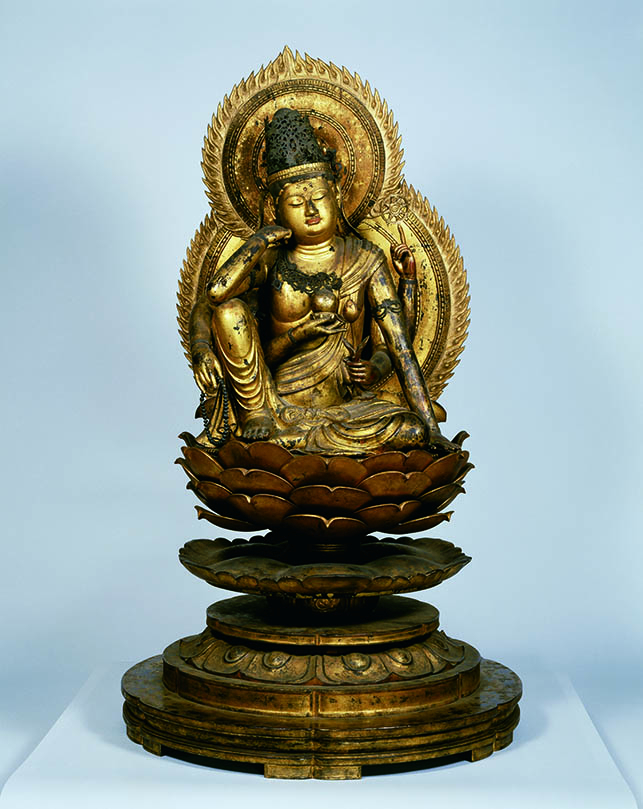
Heian period, 10th entury, Important Cultural Property
Image courtesy of Nara National Museum
Section2 A Center of Esoteric Buddhist Rituals
Since ancient times, people have followed Buddhist practices, seeking peace and security for their nation, bountiful grain harvests, or health and safety in the home, and many other concerns. In particular, shuho rites (kajikito incantations and prayers) of esoteric Buddhism cater for a diverse range of petitions. The way that the same shuho rites are performed also differs greatly according to the specific temple and sect, and in many cases, unique practices were kept secret and not communicated to outsiders. Demand tends to concentrate on particular Buddhist monks who have acquired special powers through religious practice. For instance, a monk at one temple may be the go-to person when praying for rain, and a different monk at another temple may attract people praying for safe and easy childbirth. Likewise, particular temples gained the trust of the imperial family and noble families. From the Heian period to the Kamakura period, Daigoji Temple produced a series of highly-respected Buddhist scholars and monks with special powers, earning a reputation as a center for the study of esoteric Buddhist practices. In addition to studying their own heritage, they also collected information about other sects, keeping detailed records of their research. They were also keen collectors of iconography, the design drawings that provided fundamental icons for rites. Some 70,000 historical documents at Daigoji Temple have recently been designated National Treasures. These sacred teachings and other documents are part of the collection of studies made by monks and scholars at the temple over the course of several centuries. No other temple has a comparable wealth of sacred documents relating to esoteric Buddhism. This section of the exhibition focuses on creations produced from the Heian period to the Kamakura period, including Buddhist statuary, paintings, and esoteric ritual implements. Due to its imperial family and noble family patronage, many of the works of art belonging to Daigoji Temple are the products of first class Buddhist sculptors and painters. That is probably why many of the scary Buddhist figures also exhibit a certain grace and beauty.
-
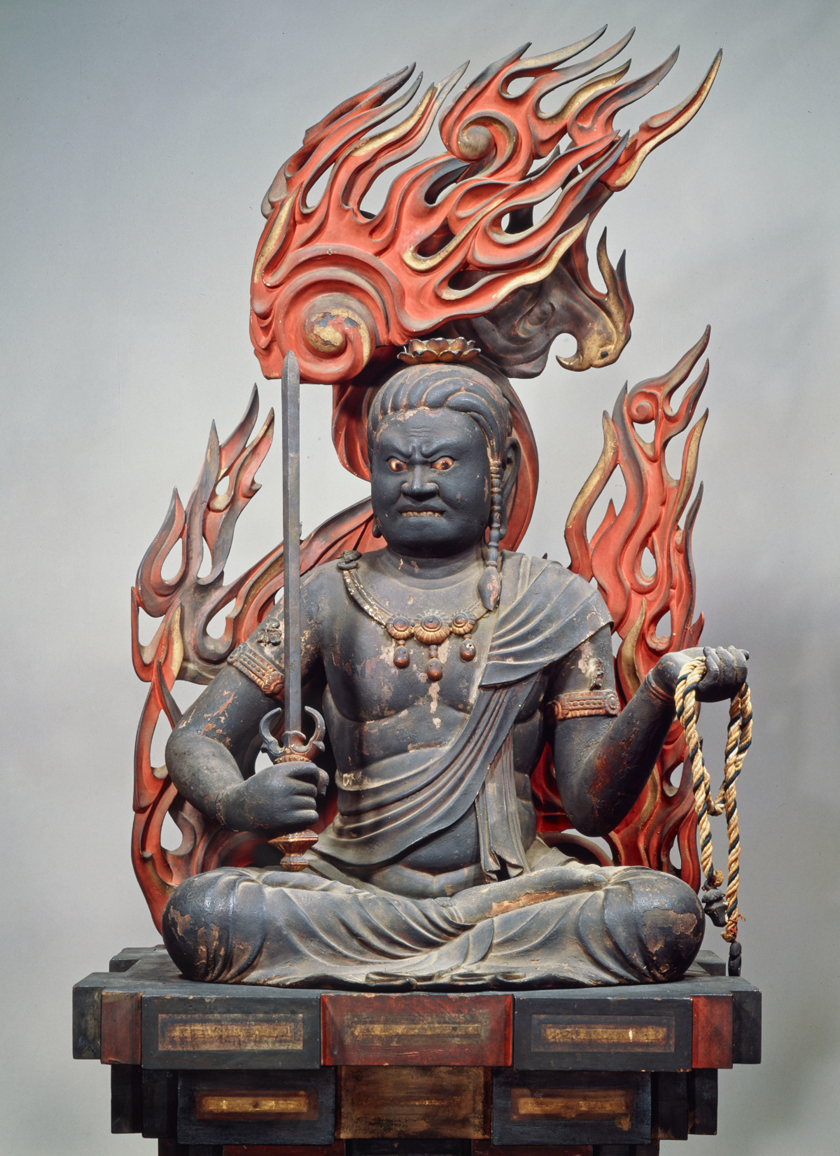
Seated Fudō Myōō (Acala)
Kamakura period, dated Kennin 3 (1203), Important Cultural Property
Image courtesy of Nara National Museum -
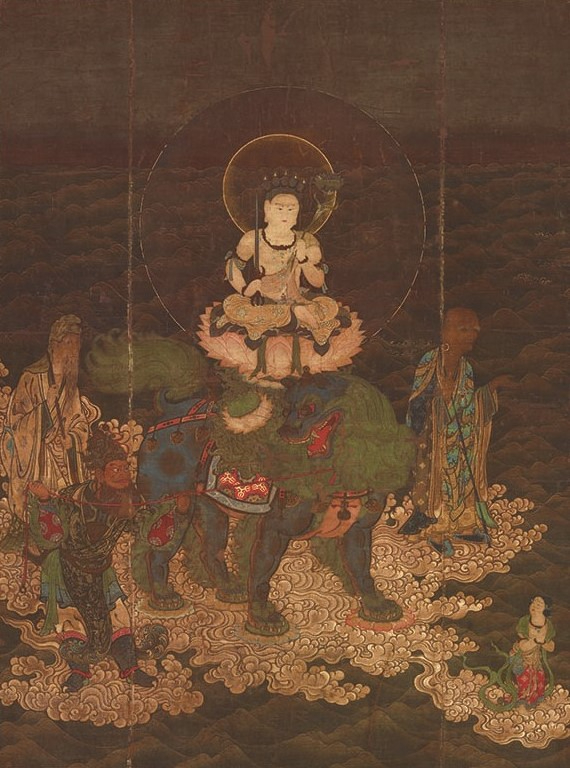
Monju Crossing the Sea
Kamakura period, 13th century, National Treasure
(on display until July 21, 2024)
Image courtesy of Nara National Museum
Section 3 Upholder of Momoyama-period Culture
In 1470, the Shimo-Daigo complex, with the exception of the Five-storied Pagoda, was devastated by fire at a time of war, turning the complex to ashes. The efforts to restore the complex began in earnest in 1576, when Gien was head priest of Daigoji Temple. Gien was the son of court noble Nijo Haruyoshi, which led to his appointment to the position of Jugo in the imperial court in 1585, a rank that was normally only given to imperial family members. Much of the restoration effort can be attributed to Toyotomi Hideyoshi, but Gien’s birth gave him a status broadly similar to Hideyoshi, and he was also highly magnanimous. Hideyoshi was particularly fond of Daigoji Temple, as can be seen in his choice of Daigoji as the venue for his extravagant cherry-blossom viewing party in 1598. After the death of Hideyoshi, restoration was continued by his wife Kita no Mandokoro and other members of the Toyotomi clan, who rebuilt the Kondo Main Hall and the Nio Gate in Shimo-Daigo, and a number of smaller halls in Kita-Daigo. Today, Daigoji Temple’s Sanbo-in, the former main residence for head priests, holds a large collection of early-modern paintings, ranging from fusuma panels painted by Hasegawa School artists to Folding Screens of Bugaku Dancers and Folding Screens with Arrayed Fans by Tawaraya Sotatsu. One of Daigoji Temple’s attractions is that it presents a different aesthetic to that of the Momoyama period that is strongly associated with the arts of Japan today. Even during the Tokugawa period, patronage of Daigoji continued, and the restoration of temple buildings and statues made further progress. At the time, Shugendo ascetic practices were split between two schools, the Tozan-ha associated with Shingon Buddhism, and the Honzan-ha associated with Tendai Buddhism, and the competition energized both schools. In 1611, Tokugawa Ieyasu authorized Daigo Temple’s Sanbo-in to conduct Shugendo practices under the Tozan-ha name, thereby recognizing it as the headquarters for Shugendo in Shingon Buddhism. This made Daigoji Temple the temple that controlled and coordinated Shingon Shugendo practices at sacred mountains throughout Japan.
-
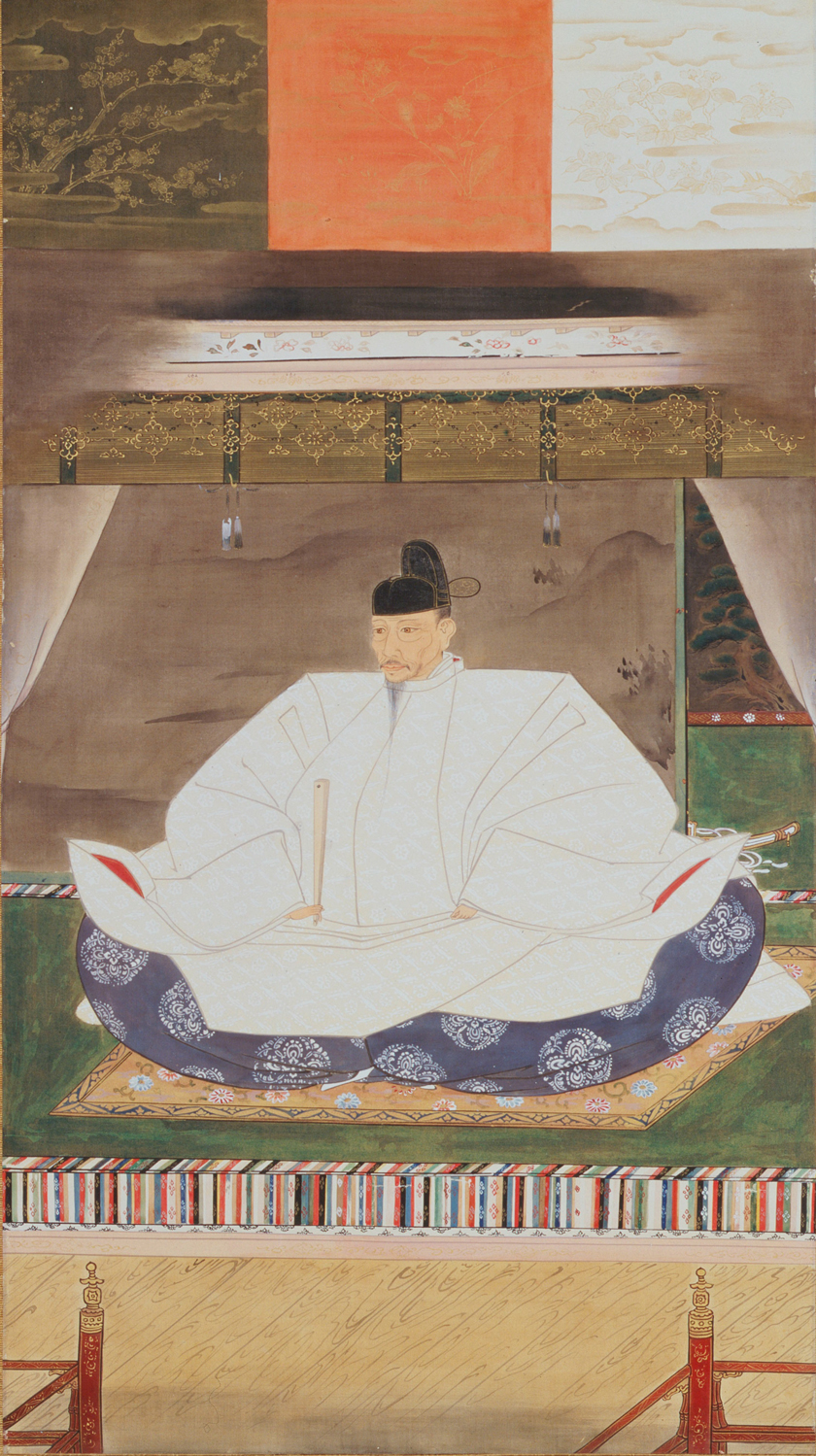
Toyotomi Hideyoshi
Edo period, 18th century
Image courtesy of Nara National Museum -
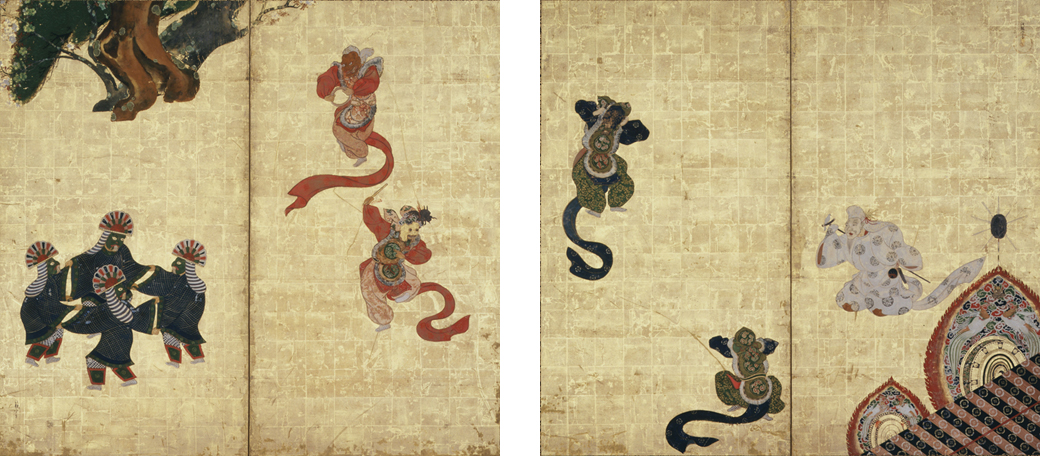
Folding Screens of Bugaku Dancers By Tawaraya Sōtatsu
Pair of two-panel folding screens
Edo period, 17th century, Important Cultural Property
(on display starting July 24, 2024)
Image courtesy of Nara National Museum -
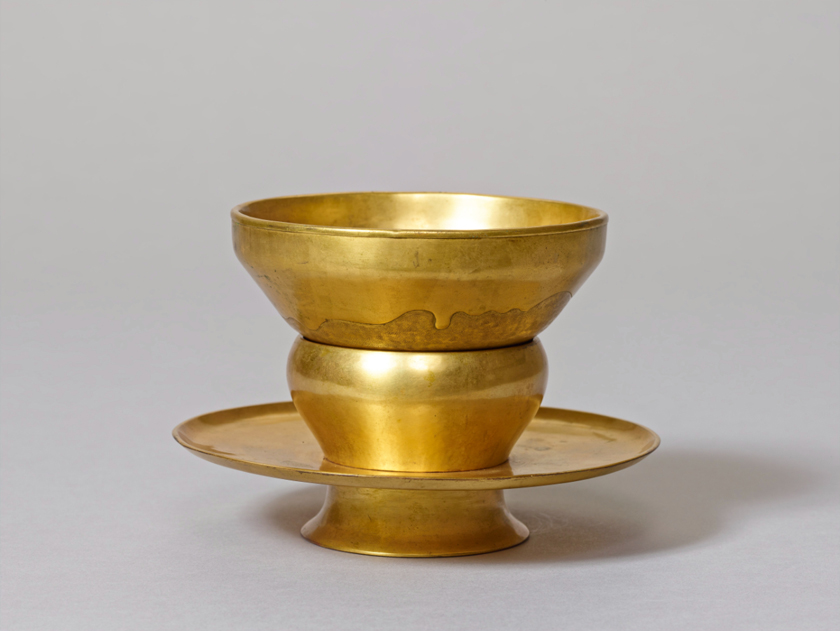
Golden Tenmoku Tea Bowl and Base
Azuchi-Momoyama period, 16th century
Image courtesy of Nara National Museum
Discount plan tickets
■a set of two adult tickets
The main rotation of exhibits will take place at the changeover from Part 1 to Part 2. This set of tickets allows you to see both Part 1 and Part 2 at a discount. (Alternatively, two people can use the tickets together for one visit.)a set of two adult tickets 3000yen
【Ticket sales locations】
Ticket Site、Online Ticket (etix)、Lawson Ticket (L Code : 51948)、Ticket PIA(P Code:686-916)、Rakuten Ticket、e+、Seven Ticket (Seven Code:105-535)、CNplayguide
【Ticket sales】
April 15 (10:00) – May 31 (23:59)
■100-yen discount voucher for bargain merchandise exclusively for Nikkei ID members General ticket at 1,600 yen (incl. tax) + 100-yen discount voucher for merchandise
【Ticket sales locations】
Online Ticket (etix)
【Ticket sales】
April 15 (10:00) – June 14 (23:59)
Audio guide
Kawashima Akira, who is a native of Osaka, graduated from Yoshimoto NSC Osaka, and has a strong connection with this show, provides easy-to-understand commentary about the exhibition.
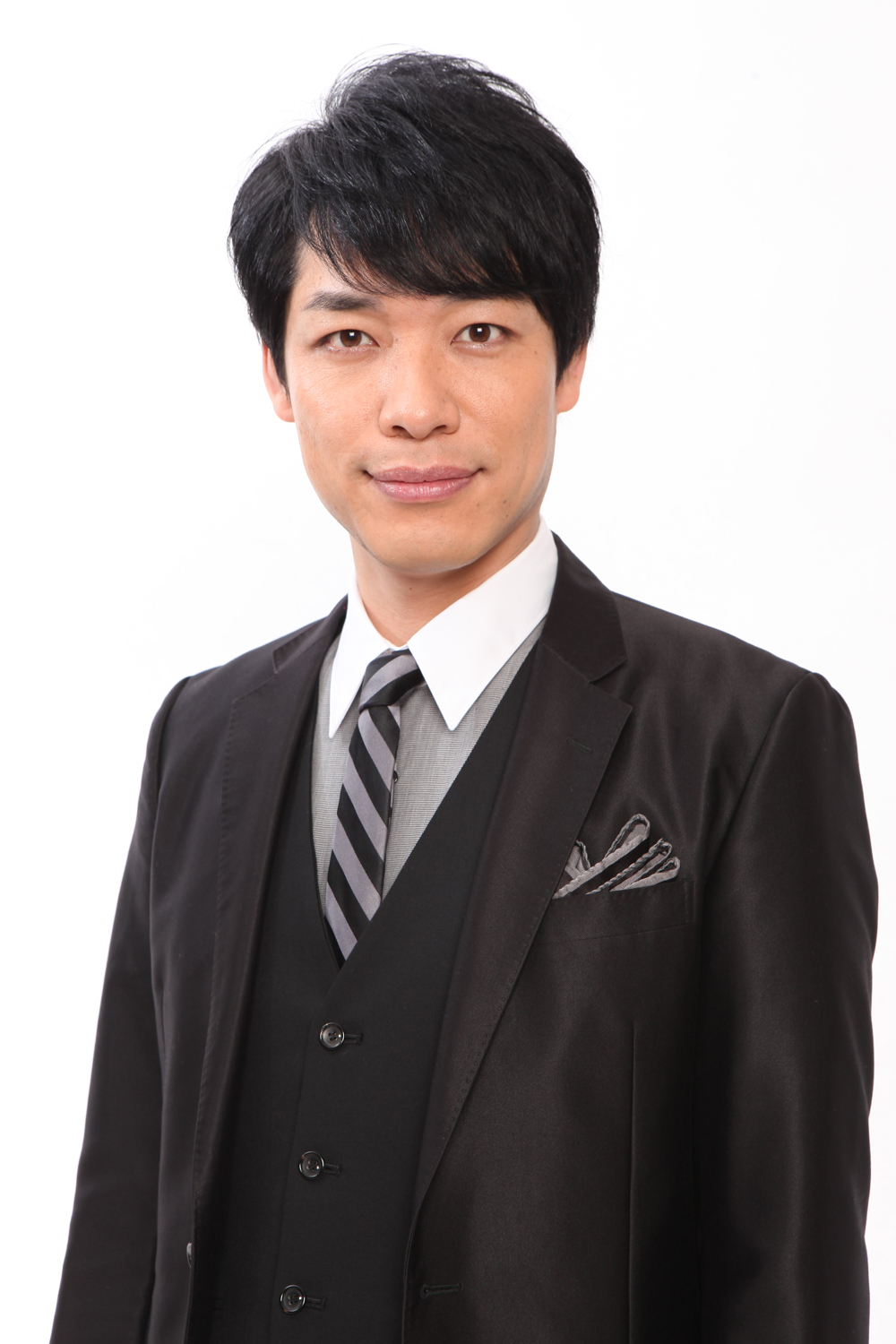
KAWASHIMA Akira (Kirin)
Kawashima was in the twentieth graduating class at Yoshimoto NSC Osaka in 1997. He formed the comedy duo Kirin with Tamura Hiroshi in 1999. He finished fifth in the first M-1 Grand Prix in 2001. He won the best new artist award at the ABC Owarai Grand Prix in 2002. He also received the best new artist award at the Kamigata Comedy Awards in 2004. He serves as the main MC on the Love It! variety show on TBS. His hobbies are illustrating, gaming, and reading manga.
Events
Special lecture: “Daigoji Temple and the mysteries of the art of esoteric Buddhism”
| Date | June 15, 2024 14:00 – 15:30 |
|---|---|
| Speaker | NAITO Sakae, Director, Osaka City Museum of Fine Arts |
| Venue | Hall on first floor of Nakanoshima Museum of Art, Osaka |
| Capacity | 150 |
| Admission fee | Free of charge with a ticket (or ticket stub) for this exhibition, to be presented on the day of the event. |
Special lecture: “Lord Buddha at Daigoji Temple—A temple of esoteric Buddhism and the Emperor”
| Date | June 29, 2024 14:00 – 15:30 |
|---|---|
| Speaker | FUJIOKA Yutaka, Professor, Graduate School of Humanities, Osaka University |
| Venue | Hall on first floor of Nakanoshima Museum of Art, Osaka |
| Capacity | 150 |
| Admission fee | Free of charge with a ticket (or ticket stub) for this exhibition, to be presented on the day of the event. |
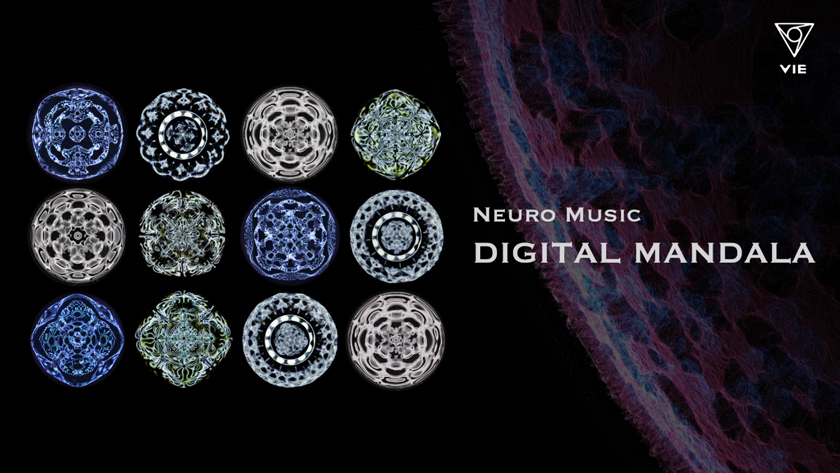
“Live Digital Mandala Art & Music Performance”
“Live Digital Mandala Art & Music Performance” collaboration between Daigoji Temple and Keio SFC supported by VIE
This is a Live Digital Mandala Art & Music Performance by Dr. Fujii Shinya, Associate Professor at the Faculty of Environment and Information Studies at Keio University and Chief Music Officer at VIE, Inc. and Professor Wakita Akira. Choral chanting by Daigoji Temple priests and neuro music affecting the mind create a sound space like nothing people have never experienced. Mandala patterns are also depicted in real time derived from the music of the outer world and the brain waves of the inner world using the latest technology in cymatics, which visualizes sound, and fluid simulation. This expresses through sound the worldview of the esoteric Buddhist teachings of the Shingon sect symbolized by the Mandala of the Two Realms and the state of Nyuga Ganyu in which Buddha and the believer become one.
| Date | July 15, 2024 14:00 – 15:30 |
|---|---|
| Speaker | Dr. Fujii Shinya, Associate Professor, Faculty of Environment and Information Studies, Keio University, and Dr. Wakita Akira, Professor, Faculty of Environment and Information Studies, Keio University) |
| Venue | Hall on first floor of Nakanoshima Museum of Art, Osaka |
| Capacity | 150 |
| Admission fee | Free of charge with a ticket (or ticket stub) for this exhibition, to be presented on the day of the event. |
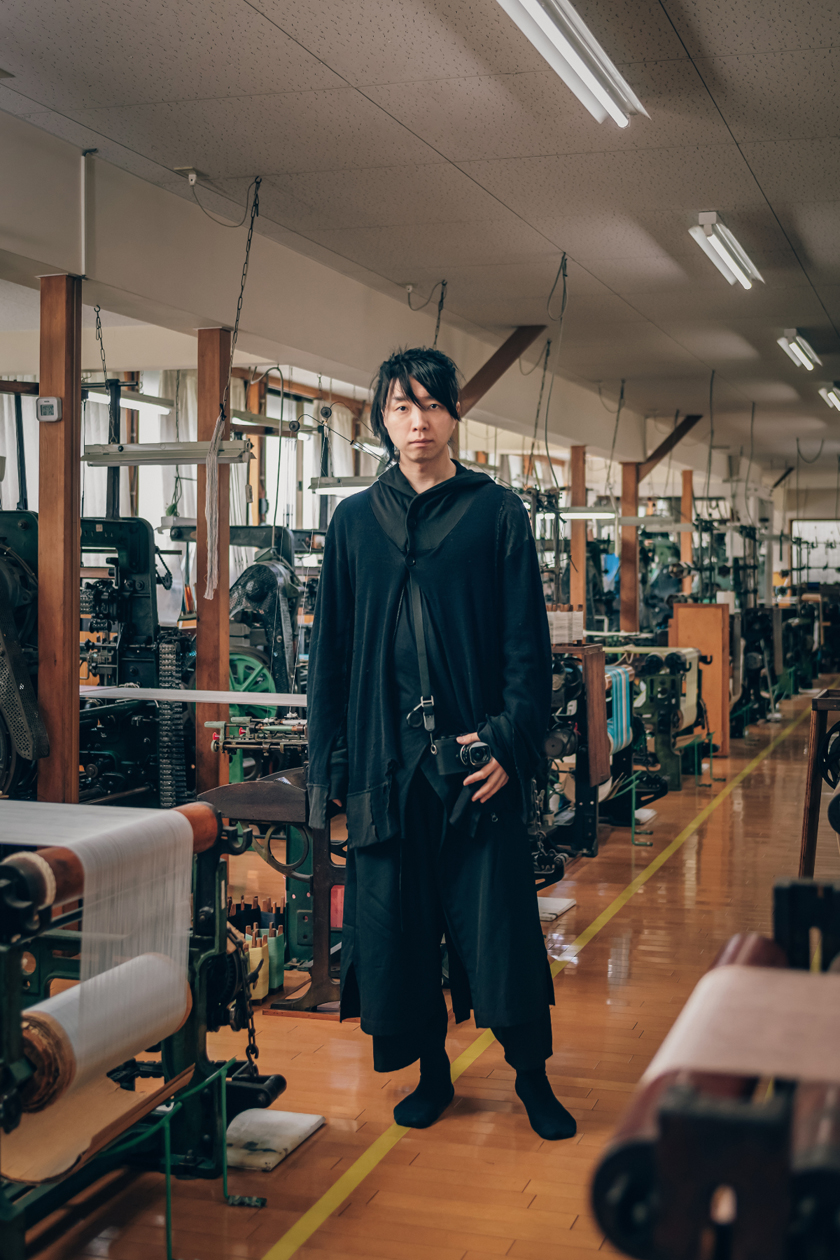
Yoichi Ochiai
photo:Jun Sugawara
“Object-Oriented Bodhisattva report and Buddhist service and talk session” collaboration between Chief Priest Nakada Junei and Yoichi Ochiai
| Date | July 28, 2024 14:00 – 15:30 |
|---|---|
| Speaker | NAKADA Junei (Chief Priest of Daigoji Temple), OCHIAI Yoichi (media artist) |
| Venue | Hall on first floor of Nakanoshima Museum of Art, Osaka |
| Capacity | 150 |
| Admission fee | Free of charge with a ticket (or ticket stub) for this exhibition, to be presented on the day of the event. |
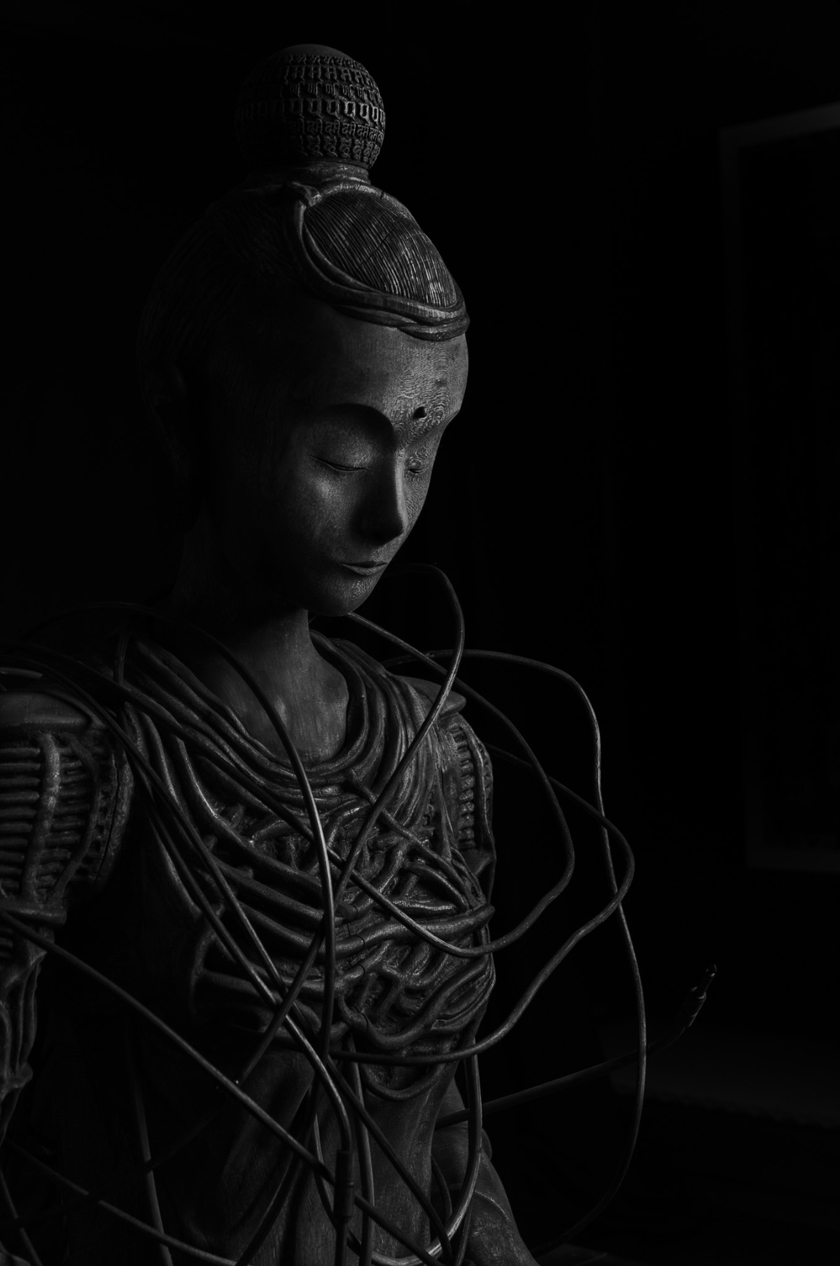
Object-Oriented Bodhisattva
Photo by Yoichi Ochiai
Object-Oriented Bodhisattva exhibit
| Dates | July 24 – August 22, 2024 |
|---|
Collaboration information
Collaboration with Sakura Miku (Hatsune Miku)
The exhibition is collaborating with Sakura Miku (Hatsune Miku). Sakura Miku is Hatsune Miku, a virtual singer from Japan who is expanding her activities onto the world stage, sporting a spring appearance with cherry blossom and cherry motifs.
Unveiling a special collaborative version between the Daigoji Exhibition and Sakura Miku
In the Sakura Miku image specially created for this show by the illustrator iXima, the singer is wearing a kimono adorned with the 5-7 Paulownia crest, symbolizing Daigoji Temple, on black fabric evoking the black building housing the museum. Daigoji Temple’s famous weeping cherry trees and Five-storied Pagoda are depicted in the background.

“Sakura Miku dancing—Daigo cherry blossoms AR” main visual
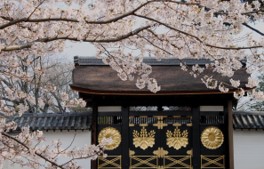
National Treasure, Kara-mon at Daigoji Temple
“Sakura Miku dancing—Daigo cherry blossoms AR” AR experience project
Daigoji Temple’s weeping cherry trees appear together with Sakura Miku in the AR (augmented reality) at the exhibition venue on the fourth floor of the museum. This project, which is rolling out with the title “Sakura Miku dancing—Daigo cherry blossoms AR,” explains how Sakura Miku is one of the highlights of the exhibition, and shows footage of Sakura Miku dancing in collaboration with the musical composition Senbonzakura (Thousand Cherry Blossoms). Visitors to the exhibition can experience this project for free using the browser on their phones. The AR collaboration with Senbonzakura can only be seen at the exhibition venue on the fourth floor of the museum.
* A ticket for this exhibition is required for admission.
-

* Conceptual image of AR experience
“Sakura Miku dancing—Daigo cherry blossoms AR” is AR content utilizing Niantic’s 8th Wall platform.
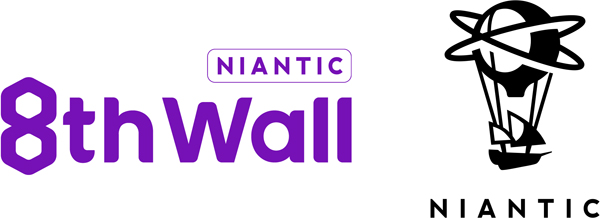
Collaboration merchandise
The museum is selling merchandise designed with a Sakura Miku theme that is only available at the exhibition venue.
* Only available during the exhibition to visitors to the show at the exhibition shop inside the venue on the fourth floor of the museum. Readmission is not allowed.
-

Post card 165yen
-

A4-size clear file 550yen
-

Acrylic stand 1650yen
-

Sticker 440yen
Hatsune Miku has also recorded a special track in the audio guide. During the exhibition, the announcement alerting visitors that the museum is closing will be played using Hatsune Miku’s voice.
